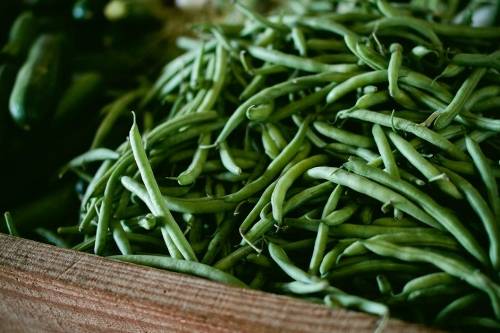Harvest for Health Gardening Study for Cancer Survivors
Do you have a garden? My husband and I planted a few vegetables and herbs in our backyard this year. So far we have harvested cucumbers, cherry tomatoes, a few green tomatoes and herbs. I can't wait until the tomatoes ripen some more. Nothing beats a home-grown juicy tomato in my opinion!
Did you know? Gardening can have positive health (physical and mental) benefits for cancer survivors. (I recently chatted with Mike the Gardener of www.averagepersongardening.com about plant-based diets and gardening for cancer survivors - check it out here).
In the podcast I discussed a recently published pilot study in older cancer survivors examining the effect of a year-long gardening intervention on participants dietary intake and other health-related outcomes. The participants were age 60 or older and had been diagnosed with early or mid-stage cancers that have high survival rates such as non-metastatic bladder, breast, prostate or thyroid cancer. Those randomized to the intervention were provided with a raised garden bed or container garden and supplies such as plants and seeds. They were also paired with cooperative extension agency master gardeners who helped the participants establish three seasonal vegetable gardens over the course of the study. The master gardeners maintained contact every two weeks (alternating between home visits and phone/email. Researchers assessed the participants diets, strength and balance, quality of life and overall health before and after the intervention.
Researchers found that vegetable and fruit intake increased in the intervention group by one serving/day. They also noticed slight improvements in 2 minute step test (marching in place for two minutes, lifting the knees to a marked point midway between the patella and iliac crest), timed 8 foot walk measuring gait speed and 8 foot get up and go (starting from a seated position, standing and walking 8 feet, returning to chair and sitting down). There was also lessened increases in waist circumference compared to control participants. About 85% planned to continue gardening and 70% had plans to expand their garden. Participants attributed the garden to eating a healthier diet, trying new vegetables and getting more physical activity.
Many cancer centers as well as cancer survivors have what is called a Cancer Victory Garden. Victory Gardens were first promoted after WW II. Extension agents provided seeds, fertilizer and garden tools to citizens to help with the war effort. In 1943 the USDA estimated that victory gardens produced more than 40% of the vegetables grown for that year’s consumption.
Cancer Victory Gardens may be planted and maintained by various people – cancer patients and survivors, caregivers or health care professionals. One description of a Cancer Victory Garden is that by having one you are “planting seeds of hope” for cancer patients. A beautiful intent and, of course, outcome!
Interested in starting a garden yourself or have patients interested? Find out what help is available in your area. Today there are almost 3000 extension offices. Many of these have a Master Gardener Program (as utilized in the study) with individuals who have been trained by extension agents These gardeners volunteer their time and conduct educational gardening programs, answering calls and questions. Most state extensions have a toll-free hotline to answer gardening questions. Many gardening centers and home improvement stores have workshops and classes too.
If you live in Alabama and are interesting in participating in a similar gardening study (or know someone who might be interested), call toll-free 1-844-476-9478 or email Harvest4Health@uab.edu to find out if you are eligible. More information can be found on the Harvest for Health website.
Demark-Wahnefried W, Cases MG, Cantor AB, et al. Pilot randomized controlled trial of a home vegetable gardening intervention among older cancer survivors shoes feasibility, satisfaction, and promise in improving vegetable and fruit consumption, reassurance of worth, and the trajectory of central adiposity. J Acad Nut Diet. 118;4:689-704





